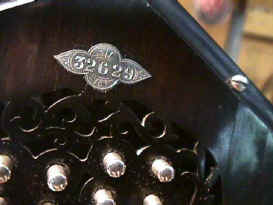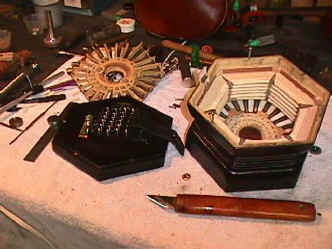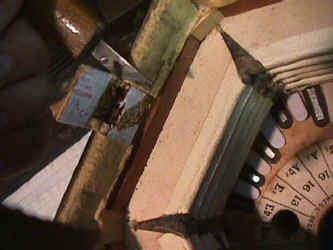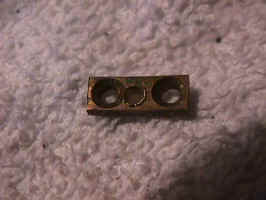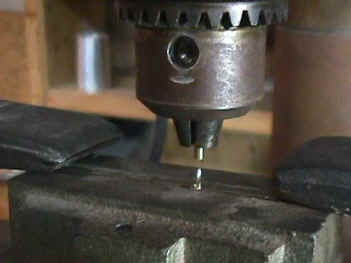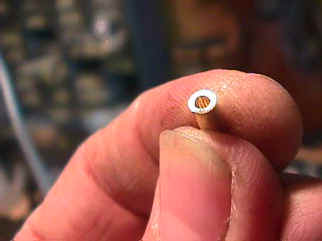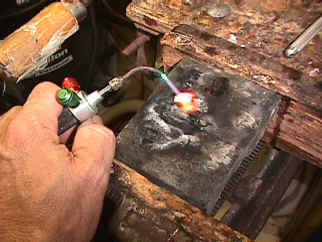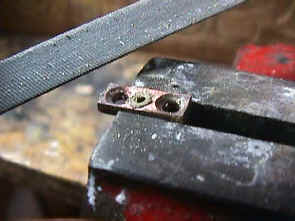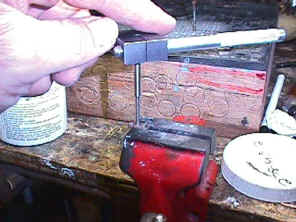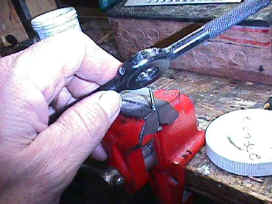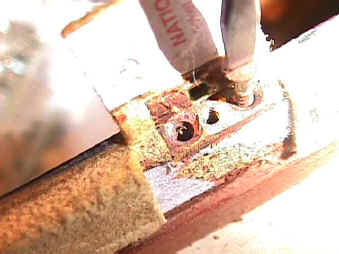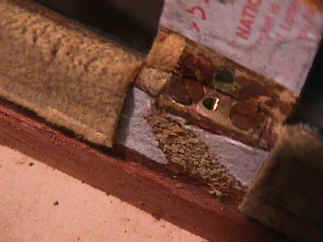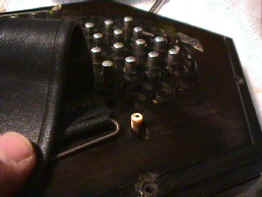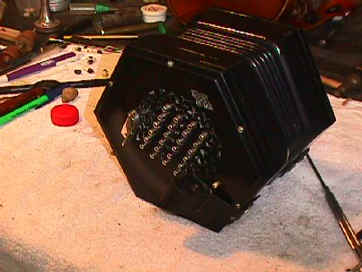| The steel endbolt anchor screws are driven
through the endbolt and into the wood of the bellows frame. They are steel and are
usually a little rusty. It is very important to use the correct size screw driver
here to prevent doing harm to the screw head. If a modest turn of the screw driver
fails to move the screw, I use a hot soldering iron to heat the screw for about a minute.
This punishment will usually loosen the screw enough for you to gently twist back
and forth to slowly remove a rusty screw. |
The offending endbolt. note the center hole,
stripped of its threads, a barren excuse. Note also that the center hole is a little
off center. This is usually the case, therefore, I must be careful to replace
the endbolt back in its same position. I usually make a small mark on the forward edge. This brings up another little problem. I cannot just tap new
threads into this piece, for the screw would then have to be a corresponding larger size
and would no longer fit in the existing holes in the ends of the concertina. I
will have to bush the center hole to bring it back to its original small size and
then tap the threads into the center hole. |
